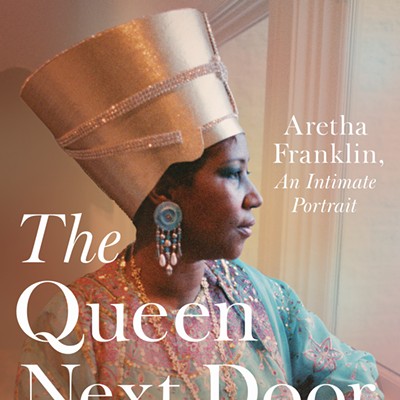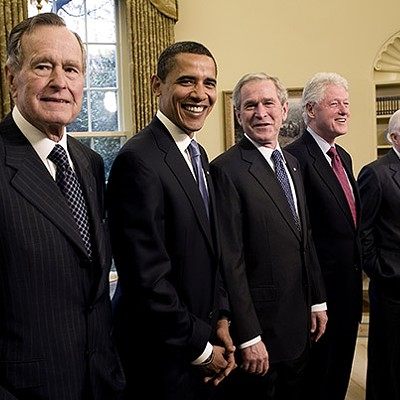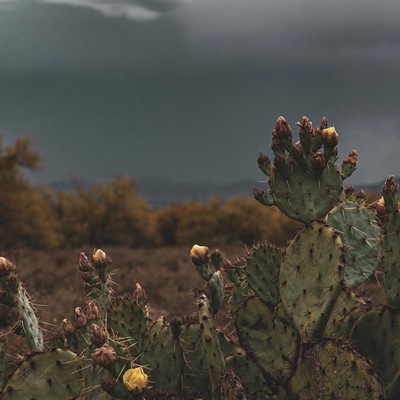Fast forward four years, and Greenfield, part art photographer, part anthropologist, comes back to town with a sizzling report on Girl Culture, the uneasy state occupied by so many young American girls. The 57 voluptuously colored photographs in her new show at the Center chart this scary terrain, a place that shares territory with her last show's consumerist world. Girl Culture is where the nation's wonder-bra-buying, midriff-baring, mascara-ed young sexpots are marooned halfway, as one hapless girl puts it, between "slutty and skinny."
Greenfield made a five-year foray into girl country, exploring such danger zones as middle-school cafeterias, high school proms, department store changing rooms, fat camps and the beaches of spring break. She finds platoons of girls obsessed with their looks and weight and clothes, frantic to be impossibly skinny and bosomy at the same time, and strutting their sexual stuff from a distressingly early age. And the ones who meet the impossible ideal use their conformity as a weapon to attack those who don't. In an affluent Minnesota suburb, Greenfield flushes out a scary pastel phalanx of popular seventh grade girls, all of them slim, sleek and blond; you'd hate to meet this pretty crew in an unprotected locker room. One of their victims, the fat and unpopular Lisa, sits in her room in another photograph, alone with her Hanson pinups.
"People make fun of me all the time because I'm overweight," she tells the photographer, who posts her interviews with kids alongside her photographs.
Not so coincidentally, Greenfield also plied her cameras in grown-up bad girl land. She ventured into Vegas showgirls' dressing rooms, to strip clubs, to porno movie sets, capturing strippers in spangles and red feathers, a porn star in pink and a Playmate in white. And surprise, surprise. It's sometimes hard to tell the difference between the candy-colored images of the sex trade pros and those of the young girls caught up in the sexualizing machine of American mass consumption.
Take Sheena, a 15-year-old San Jose teenager whose disconsolate image is captured on the cover of the exhibition catalogue. Her face is so painted she looks like Dracula's bride, and she's in a store dressing room, unhappily trying to jam her breasts into a tiny purple top as a girlfriend looks on appraisingly. Sheena tells Greenfield, "I want to be a topless dancer or a showgirl. I think it'd be fun, dancing with my tits showing off. ... It's like a goal. If I can accomplish that, then I can accomplish anything."
Granted, Sheena's an extreme case--how many girls are empowered by dreams of a strip tease?--but she's the far end of what happens when the commercial media train girls to sexualize themselves from an early age. The pro and the teen nowadays are looking more and more alike.
As Trudy Wilner Stack, the former CCP curator who put the show together, writes in an exhibition statement, "The divide is narrowing between girlish and girl-y."
Greenfield finds that little girls absorb the lesson early: To be happy, buy stuff and look good. In one photograph, tiny Lily, age 5, dressed in a frilly bra top and tap pants, picks through the neon-colored fashions at an L.A. store favored by Britney Spears. By 6, Lily's able to tell the photographer, "If I don't dress well, I feel geeky. And if I feel nice, I feel like people like me. ... I want to be famous, so everyone can see my pretty face and my whole body."
Greenfield tracks the logical consequences of such a poisonous upbringing. A covey of Virginia girls, hugging each other desperately at a party, explain that they take legal drugs for mood modification. Christine recounts getting pregnant by an Internet acquaintance. (The accompanying photo shows "fetus bingo" at her high school for pregnant girls.) Erin, a formerly anorexic adolescent, is now a feeble anorexic adult; pictured in a hospital gown, she's held upright by two medical workers. The damage roster goes on and on: the haunting faces of the sad girls at weight-loss camp, all washed up at age 11 or 13; the surgeon admiring his handiwork, rubbery woman's breasts, newly enhanced, pointing skyward.
There are a couple of bright spots. A trio of preteens who've had a winning streak in softball in Florida mug the camera, and in the Girl Culture context their childlike T-shirts and ball caps are a blessed relief. The women of the Stanford swim team, high achievers if ever there were some, stand in a row in their bathing suits poolside. Yet even these women confess to some weird body obsessions.
Greenfield's silver dye bleach prints are deeply saturated with the rich tones of advertising. Brave and intimate, the pictures testify both to Greenfield's empathy with her subjects and her deftness as a journalist. And while the pictures are full of voluptuous flesh tones and assorted breasts and bottoms, they're curiously unerotic.
That said, even Greenfield admits to some ambivalence about her project. Girls are a hot media topic right now, and the photographer acknowledges that her subject matter--nubile girls--is titillating enough that magazine editors clamor for her work. Pictures of 19-year-old blond model strolling New York City streets, attracting leering looks from men, originally illustrated a New York Times Magazine story about the travails of being young and beautiful. A bogus piece of journalism, the article was more about getting pictures of a pretty young girl into print than it was about serious issues women face. And at times it feels that Greenfield is overstating her case. Sexualized girlhood is real and it's dangerous, but lots of girls successfully navigate the shoals of damaging body consciousness. Not all of them run aground as badly as Sheena has.
Photography itself must plead guilty, at least as an accessory, to the crimes against girls. Body obsessions grew along with photography as a mass medium, and it's photographers who have put the narrow ideal of the body perfect in every young girl's way. Greenfield herself aptly comments on the phenomenon in a picture of Kristine, age 20. A baby-faced lingerie model posing on a Miami Beach, Kristine is coyly unclasping her bra. And clear as day on the right-hand side of the picture is the all-important camera, acting both as her audience and her manipulator.














